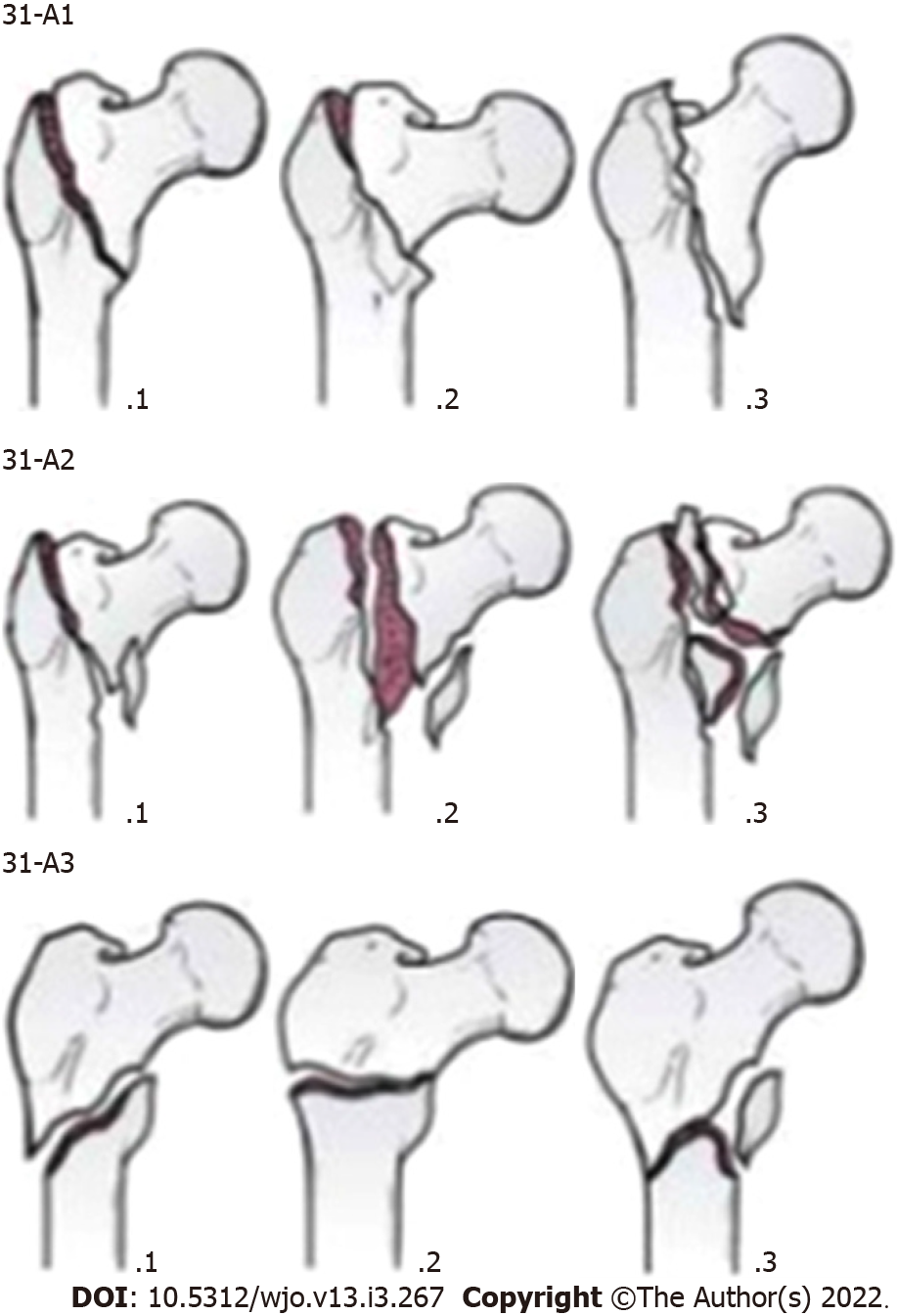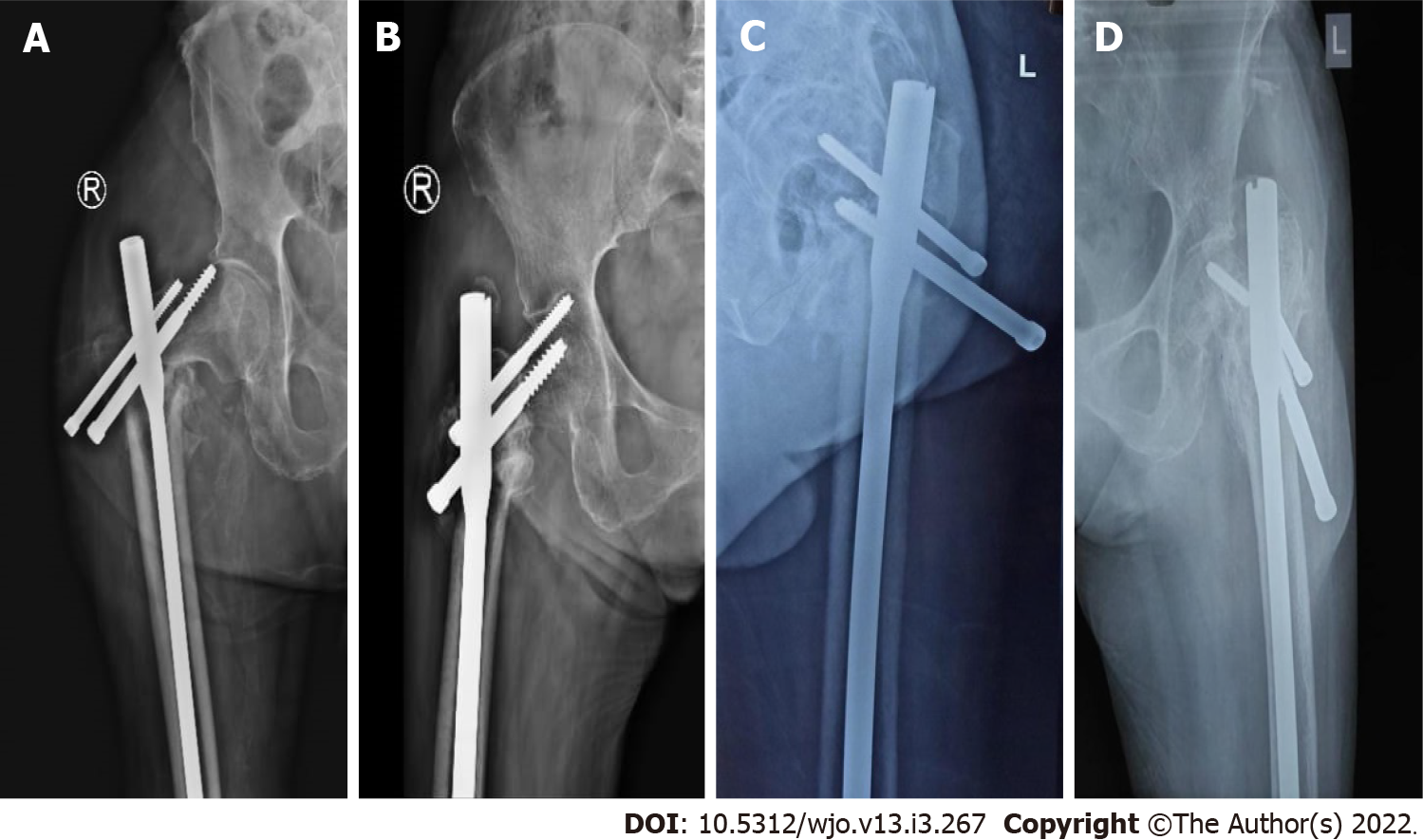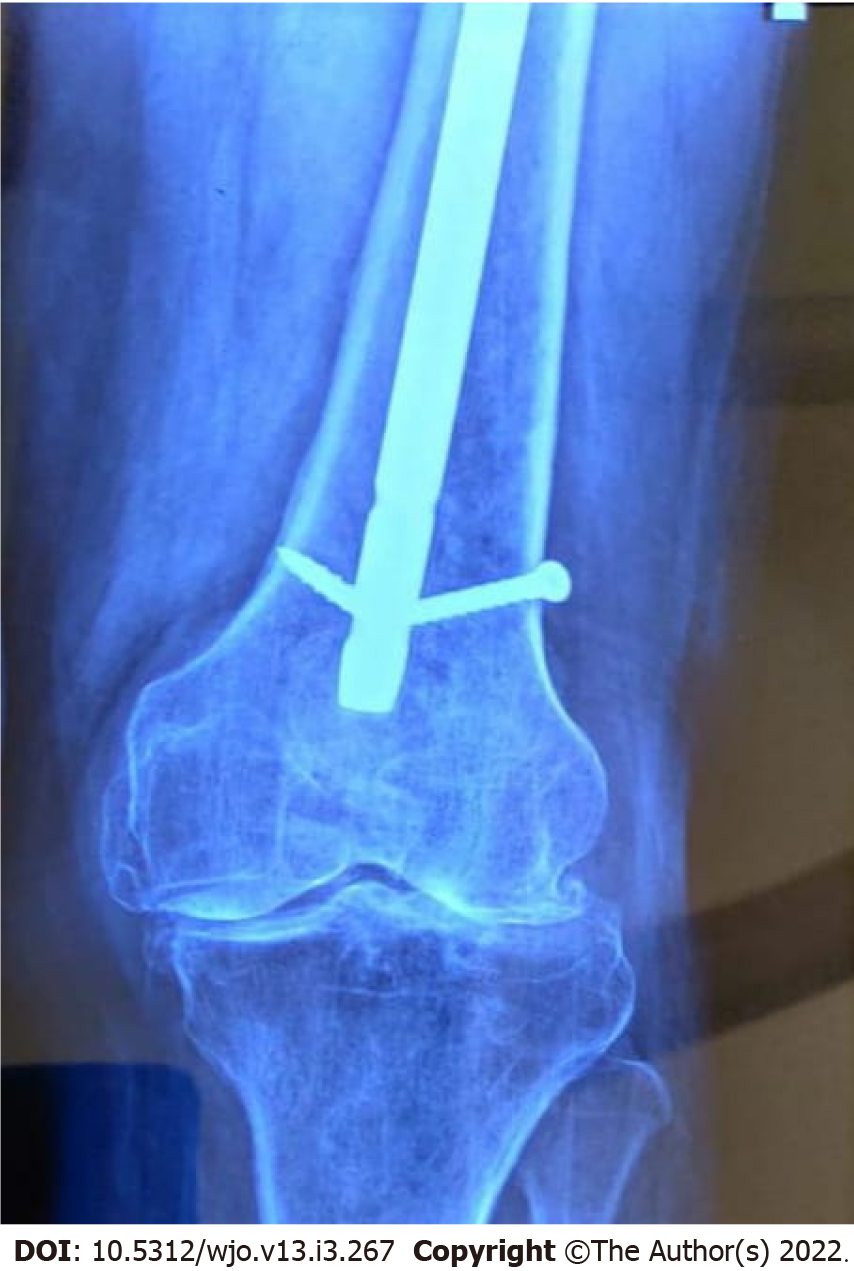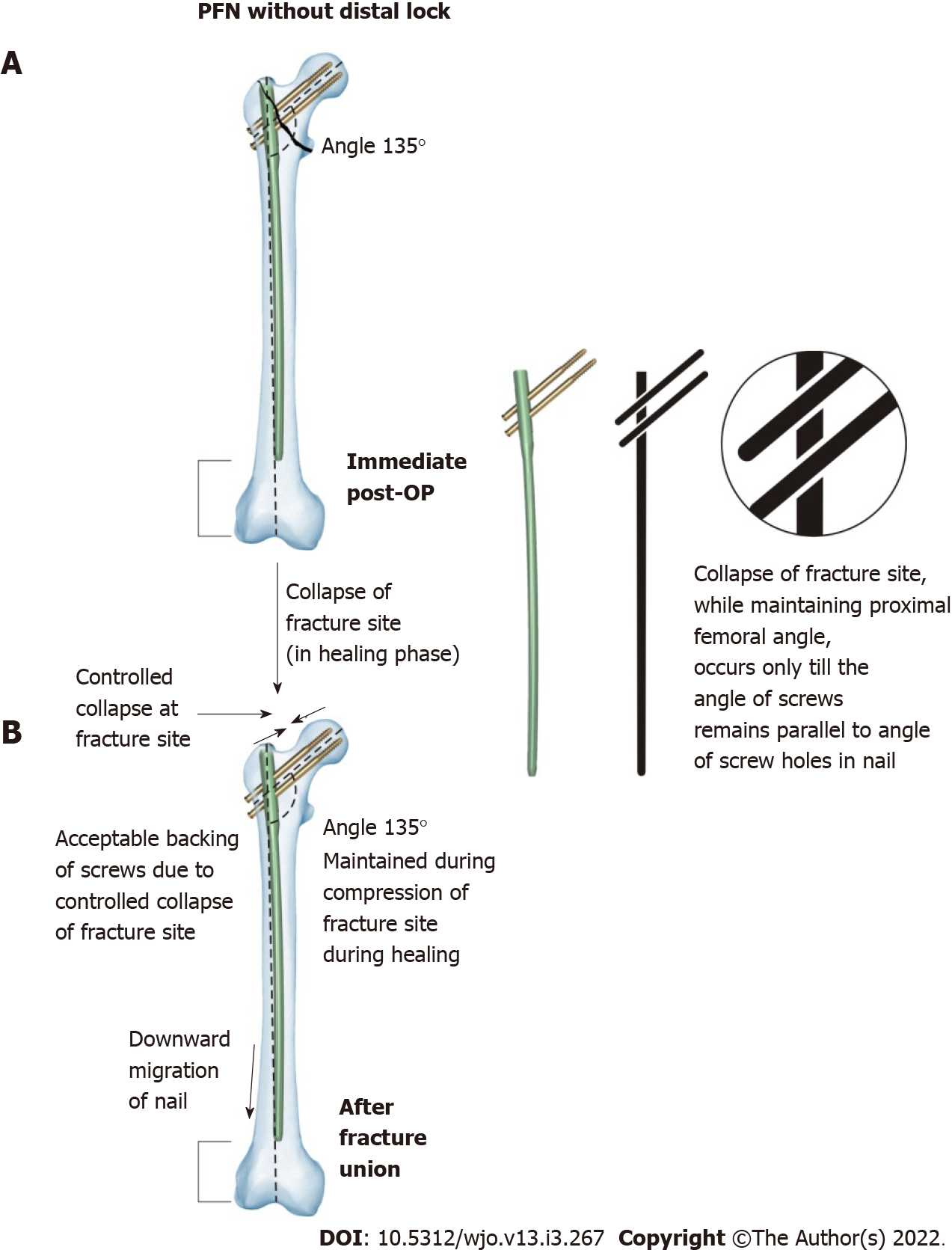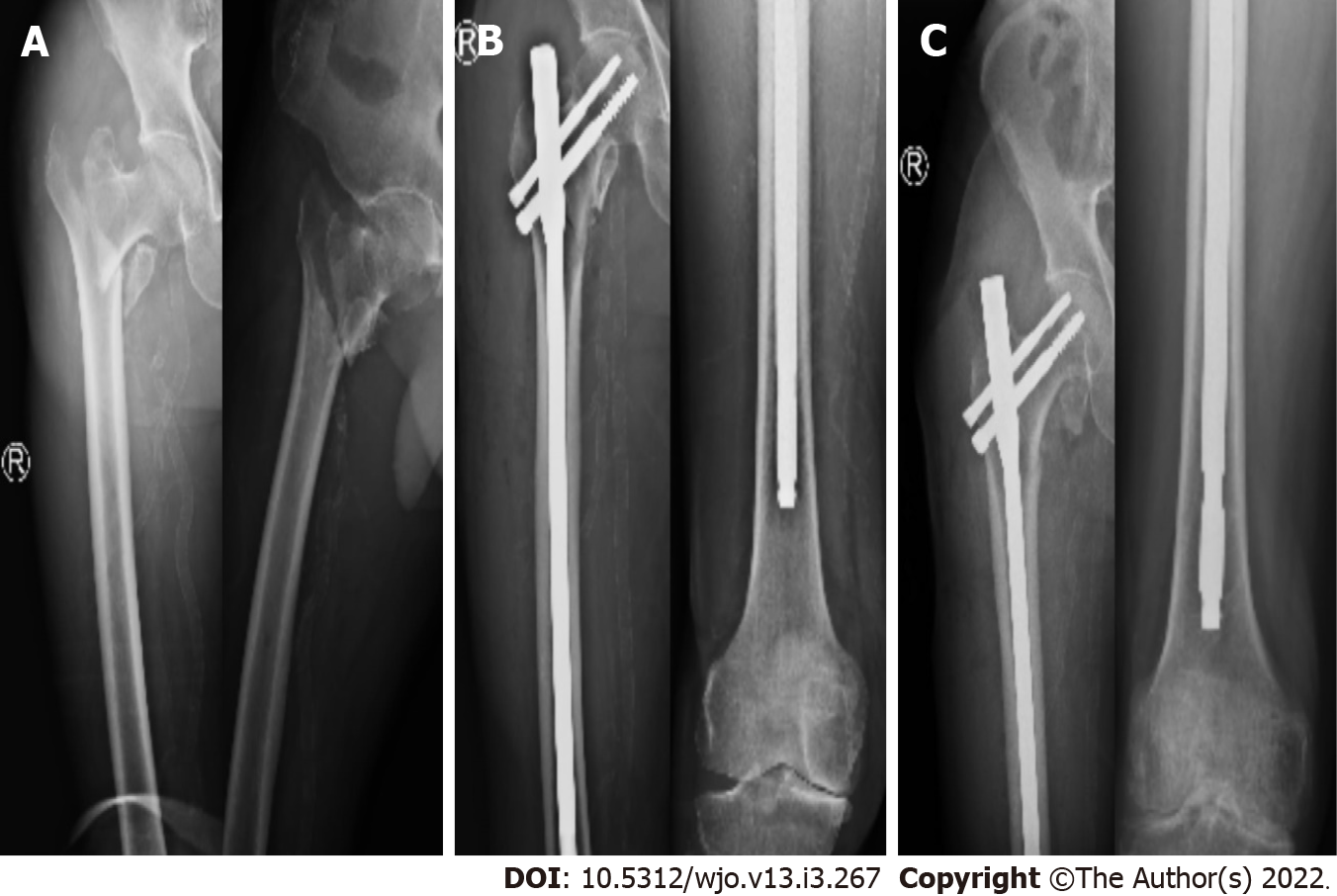Copyright
©The Author(s) 2022.
World J Orthop. Mar 18, 2022; 13(3): 267-277
Published online Mar 18, 2022. doi: 10.5312/wjo.v13.i3.267
Published online Mar 18, 2022. doi: 10.5312/wjo.v13.i3.267
Figure 1 Arbeitsgemeinschaft für Osteosynthesefragen/Orthopaedic Trauma Association classification of 31-A fractures.
Arbeitsgemeinschaft für Osteosynthesefragen/Orthopaedic Trauma Association classification as follows: (1) A1: Simple two part, lateral cortex remains intact; (2) A2: Comminuted withpostero-medial fragment,lateral cortex remains intact; and (3) A3: line extend acrossboth medial and lateralcortices,include reverseobliques.
Figure 2 Proximal lock-related complications.
A: Proximal screw cut-out; B: Z-effect; C: Proximal screw back-out; D: Proximal screw breakage.
Figure 3 Distal screw breakage.
Figure 4 Typical case presentation of a patient treated with proximal femoral nail with distal interlocking screw.
A: Immediate postoperative period; B: Downward migration of the nail because of distal locking; C: Windshield wiper effect around the purchase area of the screw in the head; D: Screw cut-through from the femoral head; E: Z-effect. PFN: Proximal femoral nailing; Post-OP: Postoperative period.
Figure 5 Typical case presentation of a patient treated with proximal femoral nail without distal interlocking screw.
A: Immediate post-OP; B: After fracture union. PFN: Proximal femoral nailing; Post-OP: Postoperative period.
Figure 6 Case of a 68-year-old female with right intertrochanteric fracture pattern Arbeitsgemeinschaft für Osteosynthesefra-gen/Orthopaedic Trauma Association 31-A2.
A: Preoperative X-ray; B: Immediate postoperative X-ray; C: After union.
- Citation: Lil NA, Makwana VR, Patel TD, Patel AR. Comparative study of intertrochanteric fracture fixation using proximal femoral nail with and without distal interlocking screws. World J Orthop 2022; 13(3): 267-277
- URL: https://www.wjgnet.com/2218-5836/full/v13/i3/267.htm
- DOI: https://dx.doi.org/10.5312/wjo.v13.i3.267









